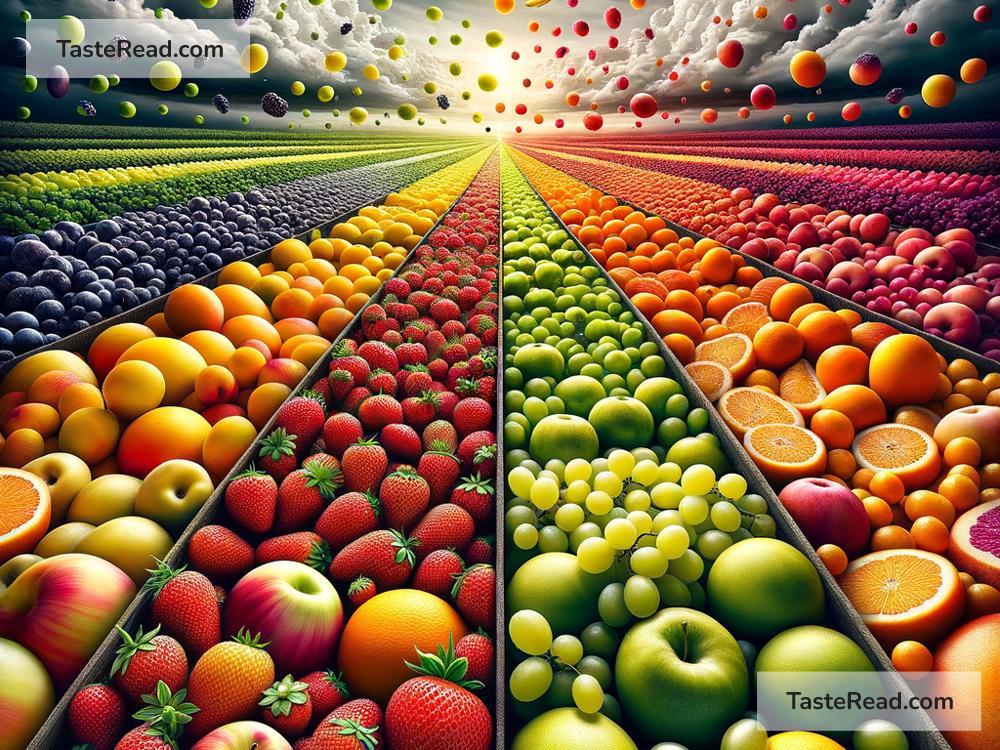How Climate Change Affects the Taste of Fruits
Climate change is a big problem that affects our planet in many ways. It brings hotter temperatures, heavier rains, stronger droughts, and other extreme weather patterns. While we often talk about climate change damaging the environment or wildlife, it also changes something close to all of us: the food we eat. Fruits, in particular, are highly sensitive to these changes. Surprisingly, climate change doesn’t just impact how fruits grow—it also changes their taste.
If you’ve ever bitten into a juicy strawberry or enjoyed the sweetness of a mango, you’ve experienced the incredible flavors that fruits bring to our lives. But those flavors are not guaranteed to stay the same as the planet warms. Let’s explore how climate change affects the way fruits taste—and why it matters.
1. Temperature Changes Affect Fruit Ripening
One of the biggest ways climate change impacts fruits is through rising temperatures. Fruits ripen based on certain weather conditions, as temperature plays a big role in their development. For example, warmer temperatures can speed up the process of ripening, which may seem like a good thing. However, faster ripening can reduce the time fruits spend growing and developing their flavors. Many fruits get their sweetness from natural sugars that build up when they ripen properly. If the ripening process is rushed, the fruit may taste bland or less sweet.
Apples are a good example of this. Studies have shown that apples grown in consistently warmer climates can lose their crisp texture and unique taste. Instead of tasting tart and flavorful, they might end up tasting dull. Similarly, fruits like cherries and berries can become soft and lose their intense flavors if they ripen too quickly.
2. Droughts Decrease Juice and Sweetness
Droughts are another effect of climate change that impacts fruit taste. Droughts happen when there isn’t enough rain, causing dry soil and water shortages. Fruits depend on water to grow properly, as water helps carry nutrients from the soil into the fruit. Without enough water, fruits can shrink and dry out. They often end up tasting less juicy and less sweet.
Take grapes, for example, which are famously used to make wine. Grapes grown during a drought may become smaller and less flavorful, which can affect the quality of the wine. Even for eating fresh, fruits like peaches and oranges suffer from dryness. When water is limited, their sweetness and juiciness are reduced, leaving us with fruits that lack their usual satisfying taste.
3. Increased Carbon Dioxide Levels Might Make Fruits Too Sweet
Here’s an interesting twist: while droughts and heat can reduce sweetness, increased levels of carbon dioxide (CO2) in the atmosphere can have the opposite effect. Plants use CO2 during photosynthesis to grow and create food (like sugars). As CO2 levels rise because of climate change, some fruits produce more sugars and grow faster. This might make fruits sweeter than normal.
At first glance, that sounds good, right? Who wouldn’t want sweeter fruits? But there’s a catch. Fruits need to balance sweetness with other flavors like acidity and bitterness to achieve their signature taste. If a fruit becomes too sweet, it might lose its balance and taste one-dimensional. For example, oranges are prized for their balance of sweet and tangy flavors. Too much CO2 could upset that balance, making them overly sweet and less refreshing.
4. Extreme Weather Causes Stress to Fruits
Other extreme weather events linked to climate change—like heavy storms, floods, and frost—create stress for fruit plants. This stress harms the fruit in a variety of ways. For instance, too much rain can cause fruits to grow unevenly or rot before they’re harvested. Frost, on the other hand, damages buds and flowers, reducing fruit production entirely. When fruits do survive these extreme events, they often don’t taste as good because they’ve struggled to grow in harsh conditions.
Stress also changes the makeup of the fruit itself. When plants experience stress, they may produce more bitter compounds to protect themselves. This can result in fruits tasting more bitter or sour than they should.
5. New Pests and Diseases Add to the Problem
Climate change doesn’t just stop at temperatures and weather—it also affects where pests and diseases live. Warmer climates allow pests to thrive in regions where they didn’t live before, attacking fruit crops. For example, certain insects like fruit flies damage fruit plants by eating their leaves and spreading diseases.
When fruit plants are attacked, they focus on surviving rather than producing tasty, high-quality fruit. This means the fruit we get will be less flavorful, smaller, or even have strange textures. Farmers may need to use more chemicals to protect their crops, which could further impact fruit quality.
Why the Taste of Fruits Matters
Fruits play a special role in our diets. Not only are they packed with vitamins and nutrients, but they also bring joy through their unique flavors. Imagine eating a banana that doesn’t taste sweet or a strawberry that’s mushy and bland—these changes would make eating fruits less enjoyable and reduce our connection to nature’s gifts. If climate change continues to alter the taste of fruits, it could also impact farmers, food industries, and markets that depend on fruit sales.
What Can We Do About It?
While we can’t reverse climate change overnight, there are ways to help. Supporting sustainable farming methods can reduce the impact of extreme weather on crops. Reducing our carbon footprint by using less energy and eating locally sourced foods can also slow the process of global warming. Most importantly, raising awareness about how climate change impacts not just the environment but also our food can encourage governments, companies, and individuals to act.
Next time you enjoy your favorite fruit, remember how fragile its taste can be—and how important it is to protect our planet for future generations to enjoy the same delicious flavors we love today.


